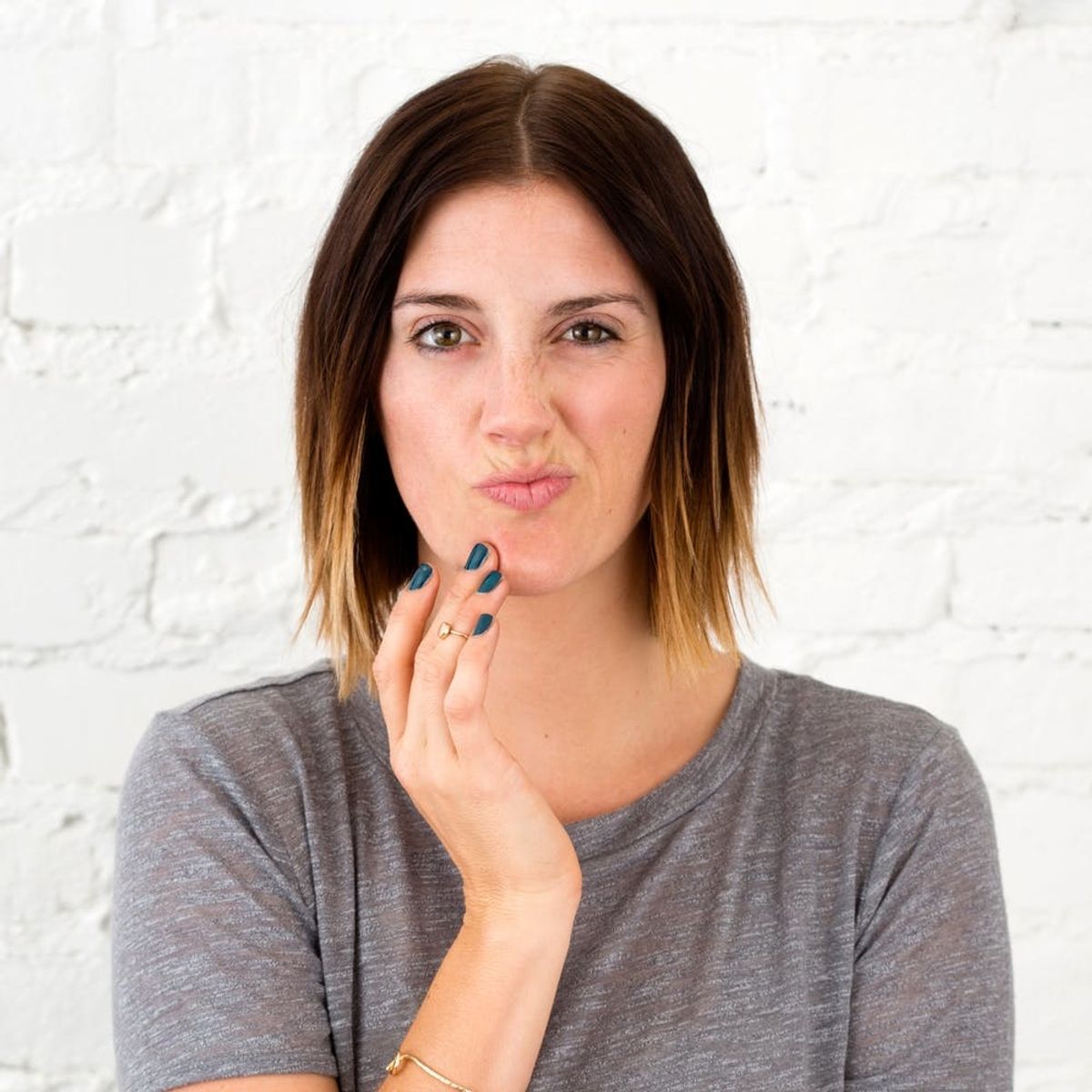Time to figure this out.
Stress or Hormones? How to Figure Out What Caused Your Bad Breakout

Breakouts are a bummer no matter when or where they decide to show up (like before an interview or a first date — how lovely!). While we’ve long been told that our acne tends to clear up once we enter adulthood, we now know that’s a big beauty myth as it can continue past our 20s and even into menopause.

We all want zits to disappear as fast as they show up, but it’s not as simple as slapping on a spot treatment and calling it a day. The fact is that all acne isn’t created equal, and they shouldn’t be treated as such. According to Joshua Zeichner, MD, director of cosmetic and clinical research in dermatology at Mount Sinai Hospital in NYC, a number of factors like genetics and diet (a high sugar intake and dairy are known contributors) can create a less than clear complexion. But the biggest culprits come down to stress, which can make an existing breakout even worse, and hormones.
“Hormonal fluctuations during a woman’s menstrual cycle create a cyclical oil gland stimulation that lead to pimples,” he explains. “Stress causes a surge of hormones that prepare the body for the stressful situation, but at the same time, [it] also promotes oil production and breakouts.”
And dermatologists have discovered a number of ways to tell the difference between the two types of breakouts in order to suss out the best solution to save your skin. Scroll on to score the tips to stopping each set of zits in their individual tracks.
Spotting the Difference
You know the saying, “Know thy enemy?” The same principle applies to planning an attack against your acne, as one of the biggest tells between the two types is where they tend to pop up. Breakouts can occur anywhere on the face, but according to Zeichner, stress-induced acne commonly crops up in the t-zone, where the highest concentration of oil glands on the face are located. While they can appear as blackheads and whiteheads on their own, the stress can also further inflame any acne that’s already present.
On the other hand, “hormonal acne tends to occur in the lower third of the face, especially around the mouth and on the jawline,” says Zeichner. He noted that dermatologists don’t yet know why the jaw is this type of acne’s area of choice, but many attribute it to being a hormonally sensitive area that cranks up the oil production during your period. Hormonal acne often appears as deep-rooted cysts that can be pretty painful if you try to pick them, popping up in the same place month after month.
Eliminating the Enemy
If you’re looking for something to get rid of that zit ASAP, there are a few over-the-counter options, namely, spot treatments, you can snap up. But you have to find the right formula to fit your needs.
“You can add a benzoyl peroxide topical to the full face to treat any pimples,” says Zeichner. He advocated the use of benzoyl peroxide-infused acne treatments like Neutrogena Rapid Clear Stubborn Acne Daily Leave-On Mask ($8) to put a stop to red, inflamed pustules on sight. “It works by killing [the] acne-causing bacteria on the skin.”
If you’re dealing with a cystic situation or surface spots that spring up when stress is high, Zeichner suggests slathering on a salicylic acid treatment like Clean & Clear Advantage Spot Treatment ($6). It’s 2 percent salicylic acid infusion ensures that the pimple-blocked pore will be gently exfoliated and cleared out quickly — all without drying out your skin in the process.
However, if neither are working within two to four weeks, he advises you to pay a visit to a board-certified dermatologist for a prescription regimen or a cortisone shot to take care of cysts.

Taking Preventive Action
“The face [is] made of thousands of pipes connecting your oil glands to the surface of the skin,” Zeichner explains. “In acne, we know that all of those pipes are slightly clogged, but we cannot predict which ones will be completely blocked leading to a pimple. Rather than playing catch-up to get rid of pimples that have already developed, it is better to prevent them from popping up to begin with.” In other words, you need a serious skincare routine that’s suited to your own individual needs.
If your breakouts occur around stressful events but your skin is otherwise clear, the NY-based derm recommends using an exfoliating cleanser like Dove’s Gentle Exfoliating Beauty Bar ($9) daily since it will “keep the skin clear without causing irritation or disrupting the skin barrier.” But when a stressful event is on the rise, he suggests then switching up your regimen with a more powerful cleanser formulated with salicylic acid, like La Roche-Posay’s Effaclar Medicated Gel Face Wash ($15), to keep pores clear.
If your hormonal acne has become beyond aggravating, you might want to meet with your derm to discuss some of your options. They can prescribe medications that help regulate your hormones’ effects on the skin, like birth control and spironolactone, a cardiovascular drug that also has acne benefits. You can also consider topicals like Epiduo Forte, which can be used to tackle hormonal or stress acne and pairs well with other treatments. “Clinical studies have shown that it is effective in treating moderate to severe acne and may decrease the risk of developing acne scars,” Zeichner says. Spot-free skin and reduced acne scars? Sign us up!
Follow us on Pinterest to score more of the skincare info you need to know.
Brit + Co may at times use affiliate links to promote products sold by others, but always offers genuine editorial recommendations.
(Photos via Brit + Co, Getty)



















